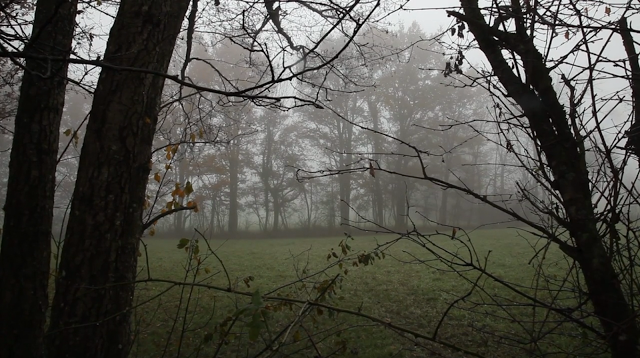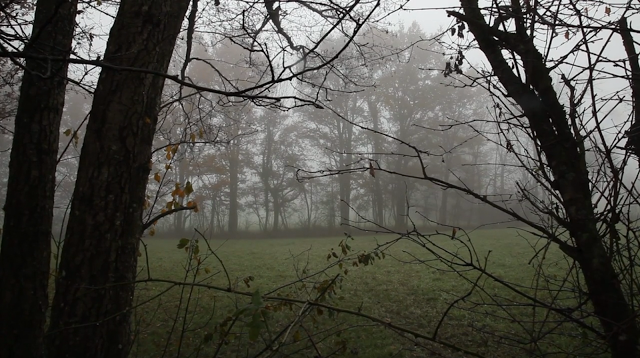I'm not really a writer. What I am is one who is interested in things; one way I deepen what I am interested in is to write about it. If I had a video camera, I would film it, but for now it will have to be writing. I love to see beauty - simple, authentic, maybe even a bit messy and imperfect, beauty. I am beginning, and maybe I have know for a long time, to see that yoga is really not about what happens on the mat, it is, but more so about what happens when I step off that mat, that is the most interesting. How can I practice yoga while at work (my other job is has me bringing food to happy people), or in the kitchen making dinner for my family or lunch for myself, or while weeding or feeding the chickens, or walking or driving or writing? How can I practice yoga while watching shows and eating pizza? These are the questions to live into (as Rilke says) and live into I will.
Viewing entries in
Posts
 According to Wikipedia, Wabi-sabi is an aesthetic centered on the acceptance of transience and imperfection. It is beauty that is imperfect, impermanent, and incomplete. Asymmetry, asperity (roughness, irregularity), simplicity, economy, austerity, modesty, intimacy and appreciation of the ingenuous integrity of natural objects and processes. If an object or expression can bring about within us, a sense of serene melancholy and spiritual longing, then that object could be considered wabi-sabi.
Wabi-sabi nurtures all that is authentic by acknowledging three simple truths:
According to Wikipedia, Wabi-sabi is an aesthetic centered on the acceptance of transience and imperfection. It is beauty that is imperfect, impermanent, and incomplete. Asymmetry, asperity (roughness, irregularity), simplicity, economy, austerity, modesty, intimacy and appreciation of the ingenuous integrity of natural objects and processes. If an object or expression can bring about within us, a sense of serene melancholy and spiritual longing, then that object could be considered wabi-sabi.
Wabi-sabi nurtures all that is authentic by acknowledging three simple truths:
Nothing lasts. Nothing is finished. Nothing is perfect.
...my thoughts to come.
Vernal Equinox and Navaratri: Spring is in the air! -by Alessandra Pecorella
In coincidence with the vernal equinox (the arrival of Spring, literally when night and day have equal length) we also have the occurrence of the Hindu festival Navaratri, literally 9 nights , celebrating Shakti in her manifestations as Durga, Lakhsmi and Saraswati.
During the calendar year Navaratri is celebrated 4 times, corresponding to the change of the seasons (equinoxes and solstices). This is a time to profoundly reconnect with the Motherly Energy of the Earth, Shakti, the power lying at the base of the spine and in the very core of the planet. It is a time for reflection, cleansing, meditating , releasing the past and planting new seeds for the future. The festival of Navaratri is closed by a tenth day of music , parades and dancing to acknowledge the victory of Maha Shatki (the divine feminine energy).
Living Practices to tangibly reconnect this time of year. Fasting in a way that is appropriate for your system is also traditionally part of Navaratri. Kirtan for the divine mother. Chanting 18-27-54 or 108 rounds for the different aspects of the Goddess, while meditating within your heart upon : Om Dum Durgayai Namaha, Om Shrim Maha Lakshimaye Namaha, Om Aim Saraswataye Namaha Days 1-3 Purification of Inner and Outer Obstacles on the Spritual Path (Durga Shakti) Days 4-6 Worshiping the Healing Beauty and Abundance of Maha Lakshmi Days 7-9 Awakening the Divine Wisdom and Creativity of Saraswati Ma Day 10 Victory of Shakti
Hope you can find the space and time in your Sadhana to appreciate this transition in divine tune with the Earthly energy.
Reposted from 2012
Rolf Gates, in his beautiful and practical book Meditations from the Mat, says of the yama Aparigraha (aka non-hoarding, non-covetousness, non-greed) ...
Aparigraha embodies the idea of good things to come. Once we realize that we can actually part with whatever it is we have been holding on to - the 10 year old t-shirts with sentimental value, the receipts we never turned in, the clutter of our lives - we begin to understand that we are clearing a space for something (else), better. The past is dead, and we are making room for the living. I like to think of this kind of housecleaning as analogous to the preparations an expectant couple make for their baby, transforming the office, guest room or storage space into a nursery. There is the same sense of potent expectancy as we embrace aparigraha and set out to audaciously clean house.
One of the ways I'm learning to let go is with bills. Somewhere along the way, I came to understand that the money I gave to my creditors wasn't really mind in the first place, and by paying the minimum each month was just a way to prolong and unsatisfactory relationship. The yamas are simply a means to reclaim our own energy. Oftentimes when we believe that we've been holding on to something we need, we find that the reverse is actually true. The real loss is the the emptiness, the soul sickness, that we feel around any form of fear disguised as greed or hoarding. The symbols of our fear block us from the light of our own spirit. As we step away from these symbols, the phantoms, a wind catches our sails. Lighter, freer, we look up and glimpse the far shore, and suddenly we are filled with the joy of absurd good news.
I have another series coming up ...
Shine Your Chakras - March 25-29 Daily 7:30-8:45am at Shine Studio. Learn more ...
Here is what I read in class this morning. More from Mark Nepo's The Book of Awakening.
Only love, with no thought of return, can soften the point of suffering.
Water in it's clear softness fills whatever hole it finds. It is not skeptical or distrusting. It does not say this gully is too deep or that field is too open. Like water, the miracle of love is that is covers whatever it touches, making the touched thing grow while leaving no trace of its touch. True, the faces of shores and the arms of cliffs are worn to bone. But this is beyond the water's doing. This is the progress of life, of which water is but an element.
Most things break instead of transform because they resist. The quiet miracle of love is that without our interference, it, like water, accepts whatever is tossed or dropped or placed into it, embracing it completely.
Of course, we are human are easily hurt if not loved back or if love poorly. But we waste so much of life's energy by deliberating who and what shall be worthy or our love when in the deepest sense, these choices are not in our province, anymore that rain can choose what it shall fall upon.
Certainly, we need to make decisions: Who will I spend time with? Who will I learn from? Who will I live with? Who will I marry? But beneath all that, the element of love doesn't stop being elemental. It does not stop covering everything before it. And over a lifetime, the pain of withholding this great and quiet force is more damaging that the path of being rejected or loved poorly. For love, like water, can be dammed, but toward what end?
In truth, the more we let love flow through, the more we have to love. This is the inner glow that sages and saints of all ages seems to share: the wash of their love over everything before them, not just people, but birds and rocks and flowers and air.
Beneath the many choices we have to make, love, like water, flows back into the world through us. It is the one great secret available to all. Yet somewhere the misperception has been enshrined that to withhold love will stop hurt. In truth, is it the other way around. As water soaks scars, love soothes our wounds. If opened to, love will accept the angrily thrown stone, and our small tears will lose some of their burn in the great ocean of tears, and the arrow released to the bottom of the river will lose it's point.










